CoreLogic today released its January hedonic home value index results which, at a national level, revealed a fall of 0.3% for the month, led by a 0.9% fall in Sydney dwelling values. 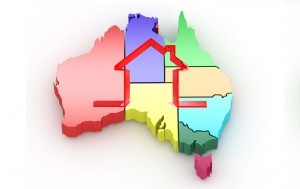
The national combined dwellings index posted a modest 0.3% fall in January, taking dwelling values 0.7% lower since their recent peak in September last year.
Dwelling value falls were most evident across the capital city regions, with the combined capitals index down half a per cent over the month, while the combined regional areas of Australia continued to see values edging higher, up 0.2% in January.
The combined regional markets have now recorded a stronger monthly change in values relative to the combined capital cities over each of the past four months.

Across the capital cities, while broad-based, the softer month-on-month housing market conditions were led by Sydney (-0.9%), with declines also reported in Melbourne (-0.2%), Adelaide (-0.2%), Perth (-0.4%), Darwin (-0.2%) and Canberra (-0.1%) while values in Brisbane were unchanged.

Housing market activity is generally more sedate from late December through to late January; a factor which can contribute towards higher volatility in housing market measurements due to the lower number of observations.
Our experience has been that this seasonality doesn’t exert much influence over the trend in hedonic valuations.
While January may deliver additional noise in the indices results, the negative monthly result lines up with recent months, which showed a softening trend, particularly in Sydney and, to a lesser extent, Melbourne.
In the absence of a catalyst to reinvigorate the market, such as lower mortgage rates or a loosening in credit policies, we expect to see a continuation of softening conditions across these markets.
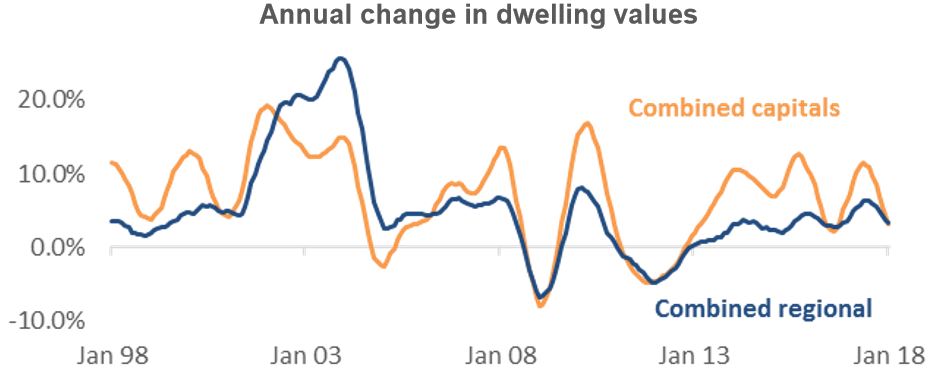
The Sydney housing market has now retraced by 3.1% after dwelling values surged 75% between February 2012 and the recent peak in July last year.
With a history of such strong capital gains, the fall in Sydney housing values to date has been mild and the vast majority of Sydney home owners remain in a strong equity position.
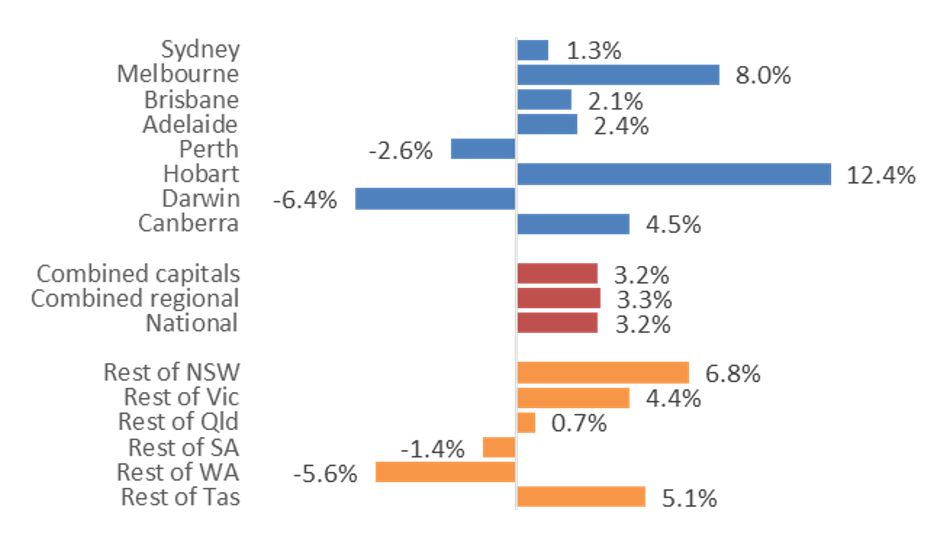
Melbourne’s housing market has recorded two successive month-on-month declines in dwelling values following a 59% surge in values over the growth cycle.
Since peaking in November last year, the cumulative decline is only 0.4%, highlighting Melbourne’s resilience to a downturn in values relative to Sydney, which is likely attributable to better housing affordability, stronger population growth and, up until recently, a faster rate of jobs creation. 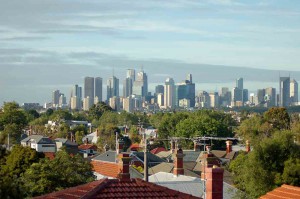
Focusing on the results over the past three months, the trend in housing market conditions becomes clearer, with the only capital cities to record a decline over the three months ending January being Sydney (-2.5%), Perth (-0.3%) and Darwin (-1.6%).
The remaining capitals are generally seeing dwelling values holding firm or showing only a subtle rise.
It was the first time since the three months to December 2006 that Sydney recorded the weakest value change of all capital cities.
Based on the CoreLogic results, dwelling values remained virtually flat across Melbourne, Brisbane and Adelaide over the past three months with each city seeing a rise of just 0.1%, while Canberra values are slightly higher at 1.0%.

Once again, Hobart was the exception; dwelling values are generally rising by around 1% month-to-month. 
Hobart remains as the only capital city to record double digit growth over the past twelve months, with dwelling values up 12.4%.
Hobart’s high rate of capital gains can be partly attributed to low housing prices relative to the larger mainland capitals; Hobart median house values are about 59% ($616,000) lower than Sydney’s and 48% ($401,000) lower than Melbourne’s.
With values rising quickly in Hobart and now easing in Sydney and Melbourne, this affordability advantage is being eroded.
Rental markets remain patchy across the capital cities, with Hobart maintaining the strongest rental growth at 9.7% per annum. Despite the near double-digit rise in weekly rents, rental yields have been compressing since early 2015.
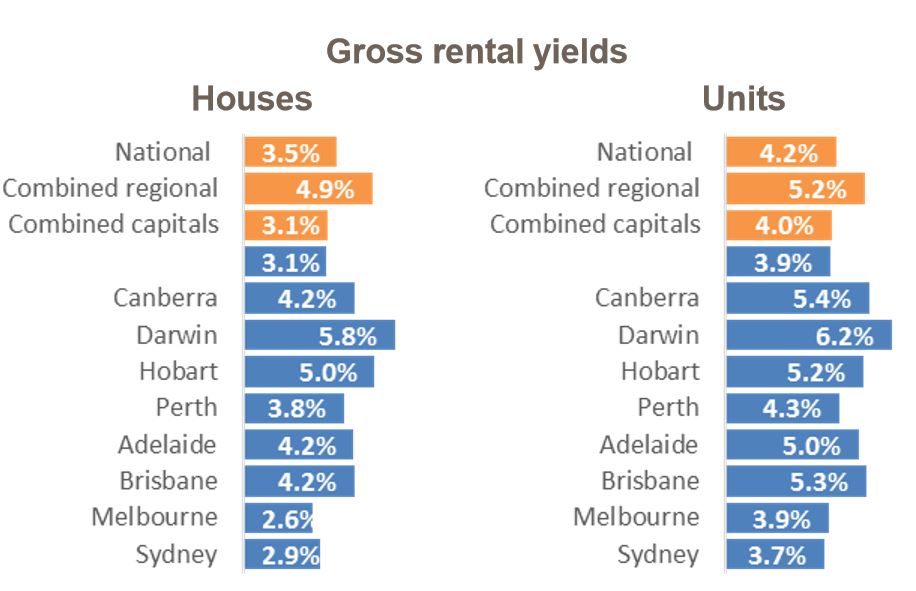
This is because growth in dwelling values (12.4% over the year) outpaced growth in rents.
However, Hobart gross yields remain the second highest of any capital city at 5.0%.
The weakest rental conditions are currently in Perth and Darwin where renters on average, are paying 1.9% and 1.5% less rent relative to a year ago.
With dwelling values down 6.4% in Darwin over the year, gross yields have pushed higher.
In fact, Darwin rental yields continue to be the highest of any capital city at 5.9% despite weak rental growth conditions. 
Melbourne rental yields have edged off from their record lows, rising by three basis points to reach 2.91% gross.
The rise, albeit subtle, has occurred against dwelling values slipping lower over the past two months while weekly rents rose by half a per cent over the past three months.
If dwelling values remain weak and rents continue to rise at the annual pace of 4.0% per annum, we may start to see yields lifting further from their record lows in Melbourne, however the process of yield repair is likely to be gradual.
Outside of the capital cities, regional New South Wales continues to show the highest rate of annual capital gains at 6.8%, however the rolling quarterly trend is easing.
If this trend continues to weaken, it’s likely that regional Victoria, where the quarterly trend is accelerating, will take over as the fastest growing regional market on an annual basis.
Regional Tasmania is also on a strong upwards trajectory as growth ripples away from Hobart.
Regional areas of Queensland and South Australia have moved into positive growth territory over the three months ending January; the first positive quarterly shift in dwelling values since May 2017 across both areas.
Regional Western Australian dwelling values continue to trend lower, however the annual pace of decline has improved relative to a year ago.
Higher commodity prices and improving labour force conditions, as well as significantly reduced values in some regions should help to support improved buyer demand across these regional markets where dwelling values generally remain well below their previous highs.

While dwelling values are now easing, both at a macro level and across several of the capital cities, it is clear that Australian housing values aren’t falling off a cliff.
National dwelling values are down just 0.7% over the past four months after increasing by 41% during the growth phase.
CoreLogic cites strong jobs growth and low unemployment, high migration levels and low mortgage rates as the key factors to support a continuation in the housing markets’ soft landing.
Labour market conditions have generally been improving, with stronger jobs growth spreading outside of Victoria and New South Wales, particularly into Queensland, and, to a lesser extent, Western Australia.
Stronger labour markets are likely to help drive confidence and support mortgage demand.
If the trend persists, stronger conditions may help to push wages growth off near record lows which would also provide a positive influence on housing market conditions.
We’re also seeing strong population growth contributing to housing demand. 
Migration rates have been trending higher which is likely to continue into 2018.
Overseas migration into Victoria and New South Wales reached record highs in mid-2017 and interstate migration has been on a clear upwards trajectory across Victoria, Queensland, Tasmania and the ACT.
With financial markets forecasting a 25 basis point lift to the cash rate before the end of 2018, there is an increasing chance mortgage rates may lift this year.
Even if the cash rate were to remain stable, there is the potential mortgage rates could be adjusted higher due to increased bank funding costs in the capital markets or in order to fulfil APRA’s local implementation requirements of the now finalized Basel III requirements for regulatory capital held against residential mortgages, particularly elements of the proposals which may lead to higher regulatory capital for some investment loans and high loan to valuation ratio loans.
More details in respect of this last element are expected over the coming months.
Higher mortgage rates would test the resilience of the housing market, especially considering household debt is tracking at record highs, however, the likelihood of mortgage rates moving substantially higher remains low.

No comments:
Post a Comment